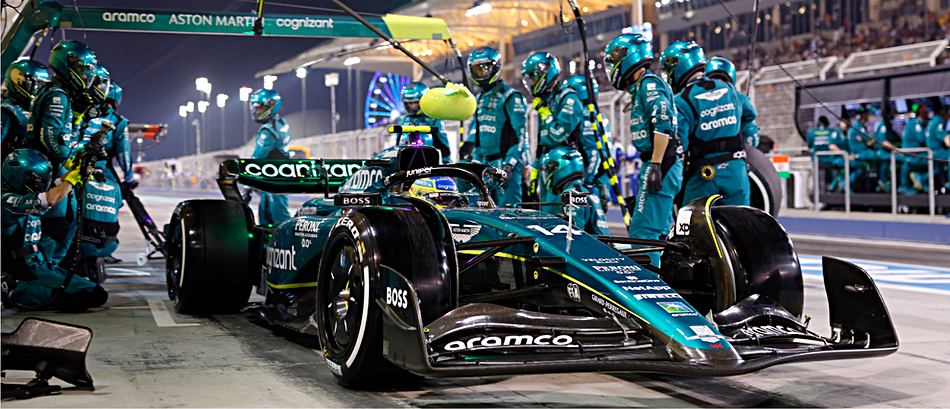The Aston Martin Aramco Formula One Team (AMF1) has completed its migration to run 100 percent of its data storage on NetApp.
NetApp’s systems are used by the AMF1 team for AI-powered design, simulation, and race-day strategy. They support telemetry analysis, help optimize race strategies, and improve car performance on and off the track. This enables faster design-to-build cycles and improved performance. We’re told that NetApp enables AMF1 to run complex simulations faster and more efficiently by providing high-throughput data storage and seamless access to massive datasets across hybrid cloud environments. This accelerates design iterations, allowing engineers to refine aerodynamics and strategy before the car even hits the track.

AMF1 CIO Fabrizio Pilotti said: “From simulations in the CoreWeave Wind Tunnel and CFD workloads to trackside telemetry, we generate and analyze petabytes of data in the pursuit of building a winning car and a winning team. NetApp provides scalable and secure infrastructure tailored for AI capability and other high-performance computing workloads, which gives us the power we need to make the right data-driven decisions across design, simulation and race-day strategy.”
If only the Aston Martin cars could win races. Hopefully Adrian Newey’s recruitment will help.
The NetApp storage is based around converged infrastructure rack-scale FlexPod systems with StorageGRID scalable, geo-distributed object storage, containers with Kubernetes, the Astra Trident data connectivity and storage orchestrator, and VMware, integrated with Cisco UCS compute servers, and Nexus and MDS networking.
The system features a NetApp BlueXP control plane spanning all its workloads from the factory in Northamptonshire, UK, to race tracks and in the public cloud. This simplifies management and increases data availability.

We should understand that there is a FlexPod setup at each F1 race track as well as at the Northamptonshire factory. It receives and stores radioed telemetry from the AMF1 cars during the race. Telemetry data can be transmitted to the factory in about ten minutes, where it can be put into a simulator system with a test driver to see what race car settings can be changed to improve things like tire degradation, ride height, and airflow over the car. NetApp’s SnapMirror technology is used to transfer data post-race back to the UK AMF1 operation.

NetApp CMO Gabie Boko said: “Formula One is one of the most demanding technical environments in the world. Races are won by split-second determinations on the track, built on a foundation of thousands of design and engineering decisions over the preceding weeks. The Aston Martin Aramco team needs prompt access to massive datasets from multiple sources without wasting time or resources on orchestrating data across different platforms.”
Prior to 2023, the AMF1 team’s storage systems came from Pure Storage, via a deal with ServiceNow, with that deal starting in 2020. It provided FlashArray//M all-flash storage systems to manage the AMF1 team’s data demands, including telemetry and analytics. Although ServiceNow is still an AMF1 technology provider, the storage supplier role has been taken over from Pure Storage by NetApp.
Now, two years after taking on the storage provider position at AMF1, NetApp has finished migrating the data off the Pure arrays, with their block storage, onto its StorageGRID object-based systems.








